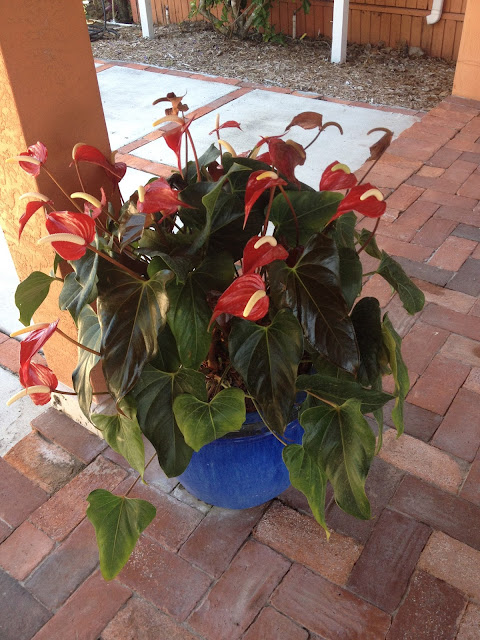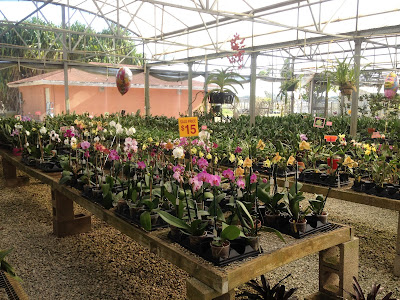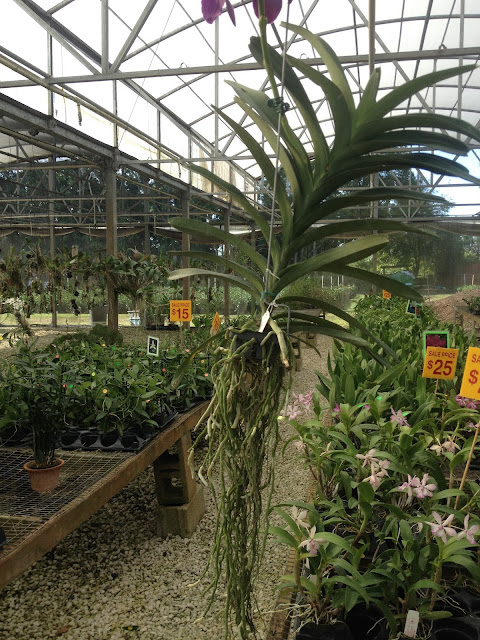We decided to drive to the farthest reaches of the park, Flamingo Visitors Center, and backtrack, stopping at some of the trails and sights. Flamingo Visitors Center, true to it's name, is painted pink, but from the second floor, the view of the keys in Florida Bay was astounding.
This little web footed guy was calmly strolling along the road, not a care in the world, and as we passed him/her, all traffic stopped as he/she decided to amble down the center of the road!
The Everglades are unlike any other landscape in the world - part Caribbean, part North American, part ocean, and part river. Water is the lifeblood of the Everglades, with summer rains signaling a time of renewal. For years the landscape has been dredged, dammed, and drained, and has endangered the Everglades almost to the point of loss. Today, restoration projects are underway to revitalize the 'glades, and re-establish altered habitats.
In an effort to get a sense of just how dependent animal life has become on the unique Everglades environment, we first stopped at Eco Pond. We could not believe our eyes:
Thousands of White Cranes, Roseate Spoonbills, and Blue Herons were using the pond as an upscale hotel!
With several additional POI's to see, we took off for West Pond. A short hike got us to a nice view of the pond.
These ponds are fed by the Shark River, which flows through the Everglades in a slow and leisurely manner. Eight miles wide and just inches deep, the river provides all the nourishment the Everglades requires, and is vitally important to its well being.
The park has done a remarkable job of building boardwalks and paved paths that wind in and out of the landscape, highlighting the variety of plant and animal life that calls the park home.
In the past, prior to conservation efforts, the Everglades were heavily logged, with millions of board feet of cypress and mahogany being cut. A few isolated old growth mahogany trees remain, and are an awesome sight.
The Gumbo Limbo tree is one of the most fascinating trees in the park. Often called the Tourist Tree due to its red peeling bark, it has a number of uses. Cuttings take root and become living fences. The wood was once used to carve merry-go-round horses. Resin provided medicinal salve for bee stings, and water proofing for canoes. Brews from the inner bark are thought to have been the original chicken gumbo soup!
A wide angle view of a grassy "prairie" (remember the eight mile wide Shark River?) led us to the last trail of the day.
Some of the inhabitants of the park are less than appetizing...
The Anhinga Trail is a short .8 mile loop that leads to one of the most diverse ponds in the park. Within the Pond we saw suspicious "logs" quietly lazing under trees,
Turtles taking advantage of a little R and R,
Oh, and another 'gator,
The Gumbo Limbo Trail not only leads into a small forest of Gumbo Limbo trees, it goes past a really neat tree trunk. I can only imagine how this may have formed.
On one of the Gumbo Limbo (I sure like saying that!) trees, a small snail has taken up residence.
After leaving Everglades National Park and a full day of walking and talking, we stopped at Soroa Orchids on the way home. Southeast Florida provides tropical plants for the entire rest of the country we've found out, and while most nurseries are wholesale only, a few have retail outlets. We stopped to check out the flowers.
Never did find out what this plant is named, but it sure is pretty!
We received a personalized tour of the orchid nursery, and it was spectacular! Small to large. Hanging to potted, You name it, they grow it!
We saw some sights today! While there aren't any white sand beaches in the immediate vicinity, south Florida is appealing in it's own way. With metropolitan cities an hour east, and wilderness an hour west, and flowers in the middle, what more could you ask for?
































No comments:
Post a Comment